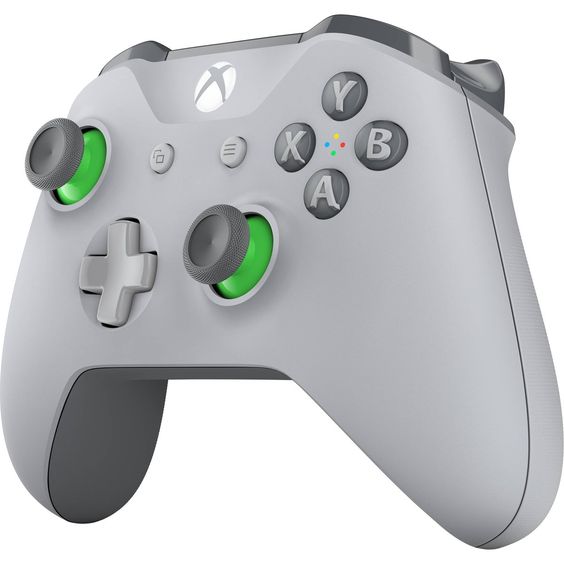Gaming controllers are the bridge between players and their virtual worlds, influencing precision, comfort, and overall gaming experience. With so many options available, picking the right gaming controller can be daunting. In this guide, we’ll explore what makes a great controller, the types available, and some tips on choosing the perfect one for your setup.
1. A Brief History of Gaming Controllers
Gaming controllers have come a long way since the simple joysticks of arcade games. Early console controllers had minimal buttons and limited functionality. Over time, as games became more complex, controllers evolved to include additional buttons, joysticks, triggers, and even motion controls. Today, controllers are designed to enhance immersion with features like haptic feedback, adaptive triggers, and customizable layouts.
2. Types of Gaming Controllers
Gaming controllers are more than just the standard console controllers most people think of. Here are the primary types available today:
a. Standard Console Controllers
These are the familiar controllers that come with major consoles like the PlayStation, Xbox, and Nintendo Switch. They often have an ergonomic design with joysticks, triggers, bumpers, and face buttons.
- Pros: Great compatibility with respective consoles, well-designed ergonomics, and often good for casual to moderate gaming.
- Cons: Limited customization options and often high prices for official controllers.
b. Pro Controllers
Pro controllers are designed for competitive gamers, featuring customizable buttons, adjustable sensitivity, and better ergonomics. Popular options include Xbox Elite and SCUF controllers.
- Pros: Customizability, high precision, and ergonomic design.
- Cons: Higher price points and may be complex to set up for casual players.
c. Arcade Sticks
Arcade sticks are often used for fighting games, providing better control over complex moves and combos with their joystick and large buttons layout.
- Pros: High accuracy and durability, especially suited for arcade-style and fighting games.
- Cons: Bulky, not ideal for most gaming genres outside of fighting games.
d. Mobile Game Controllers
Mobile gaming controllers, such as those made for iOS and Android devices, turn your phone into a portable console. They’re perfect for gamers on the go who want more control than touchscreen buttons can offer.
- Pros: Portability and ease of use with mobile games.
- Cons: Limited compatibility with specific games and devices.
e. PC Controllers
These are versatile controllers designed for PC gamers. Many PC controllers can also work with consoles, depending on the model. They are often designed to be plug-and-play, with customizable button layouts and sensitivity adjustments.
- Pros: High compatibility with PC and sometimes other devices, often customizable.
- Cons: May require additional drivers or configuration for certain games.
3. Key Features to Look For in a Gaming Controller
Choosing the right gaming controller depends on your play style and the type of games you enjoy. Here are some essential features to consider:
a. Compatibility
Make sure the controller is compatible with your gaming platform, whether it’s a console, PC, or mobile device. Some controllers are versatile and work across multiple platforms, while others are exclusive to specific ones.
b. Button Layout and Customization
Look for controllers that allow button mapping, especially if you play competitively. Customizable paddles, trigger stops, and sensitivity adjustments can enhance your gameplay.
c. Ergonomics
A good controller should feel comfortable to hold for extended periods. Consider the size, weight, and grip of the controller. Ergonomics play a significant role, especially for long gaming sessions.
d. Haptic Feedback and Adaptive Triggers
Many modern controllers offer features like haptic feedback and adaptive triggers. These features add realism to gameplay, making actions like pulling a bowstring or firing a gun feel more lifelike.
e. Battery Life
If you go for a wireless controller, battery life is essential. Look for controllers with a long-lasting battery to avoid constant recharging.
4. Top Tips for Choosing the Perfect Gaming Controller
a. Define Your Play Style
If you’re a casual gamer, a standard controller may suffice. Competitive gamers might want a controller with extra features like customizable paddles and trigger stops.
b. Consider Build Quality and Price
Invest in a controller with solid build quality that can withstand heavy use, especially if you game frequently. Pro controllers often come at a premium, but they’re built to last.
c. Look for Versatile Connectivity Options
Some controllers allow you to switch between wired, Bluetooth, and 2.4 GHz wireless options. This versatility can be handy, especially if you game on multiple devices.
d. Try Before You Buy
Whenever possible, test the controller to get a feel for its weight, grip, and button response. Many stores and events offer demos, which can help you find the best fit.
5. Top Gaming Controllers to Consider (Non-Branded)
Here’s a quick look at some top gaming controllers that cover different play styles and budgets:
- Ultimate Pro Controller – For competitive players, with customizable buttons and adjustable sensitivity
- Cloud Connect Mobile Controller – For mobile gamers who need portability and precision
- ProArcade Fighter – For fighting game fans, with arcade stick and durable buttons
- PC Versatile Elite – Designed for PC gamers with multi-platform compatibility and customization options
- ErgoPlay Comfort – Standard ergonomic controller, perfect for all-around gaming
6. The Future of Gaming Controllers
With VR and AR technologies on the rise, gaming controllers are becoming more advanced, with motion controls, adaptive feedback, and VR compatibility leading the way. The gaming controller industry is also exploring better ergonomics, environmental sustainability in materials, and more inclusive designs.

